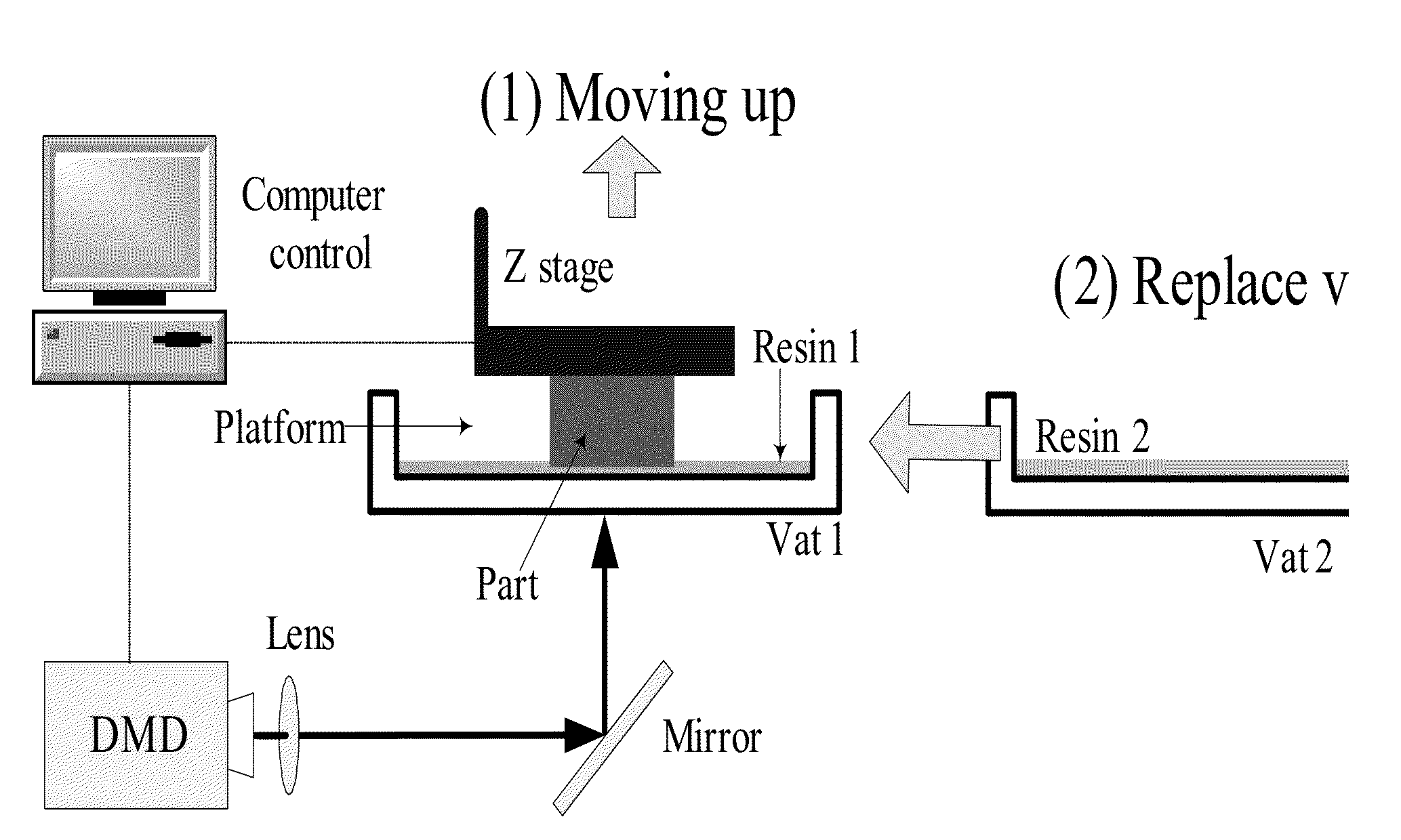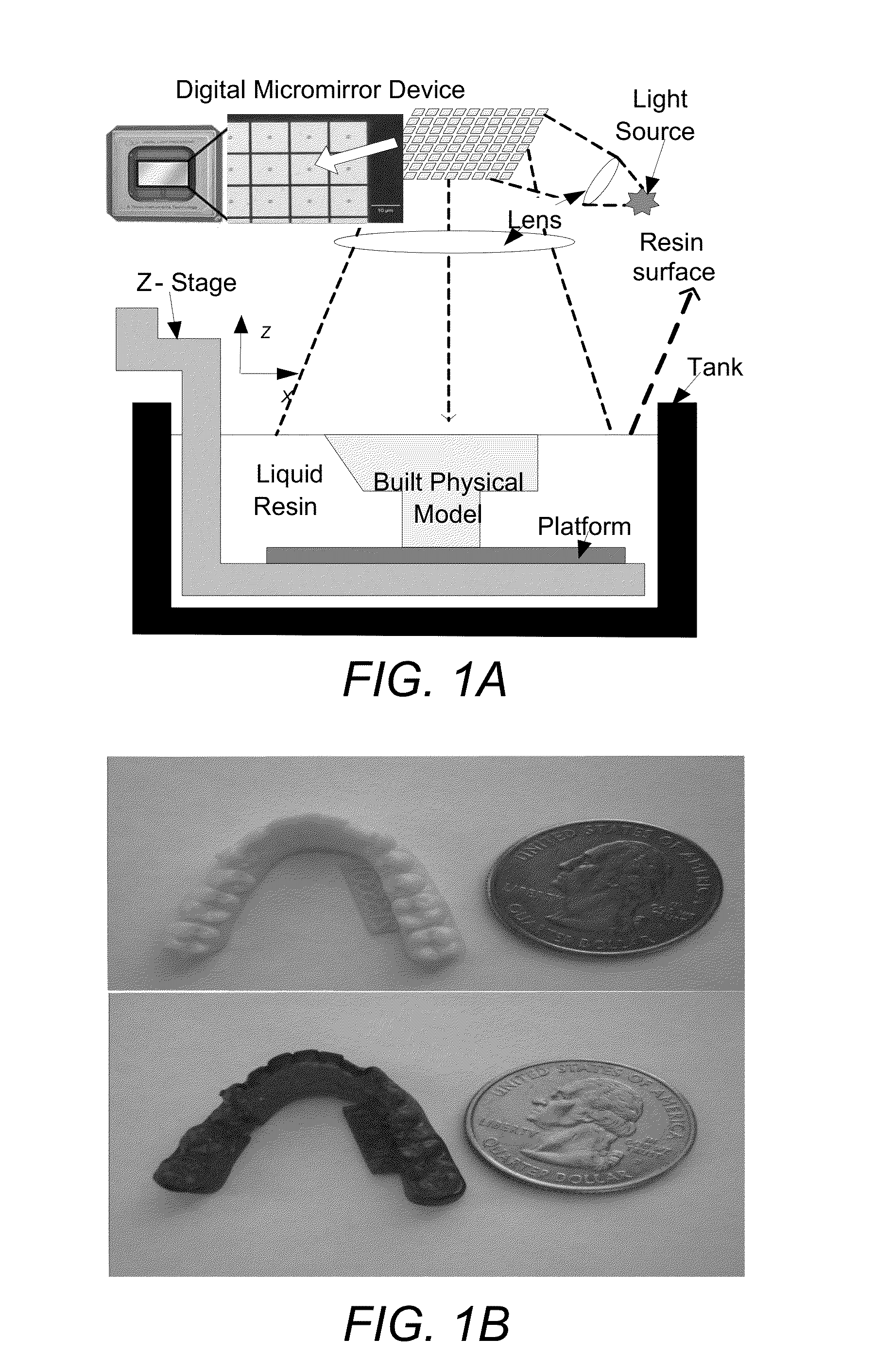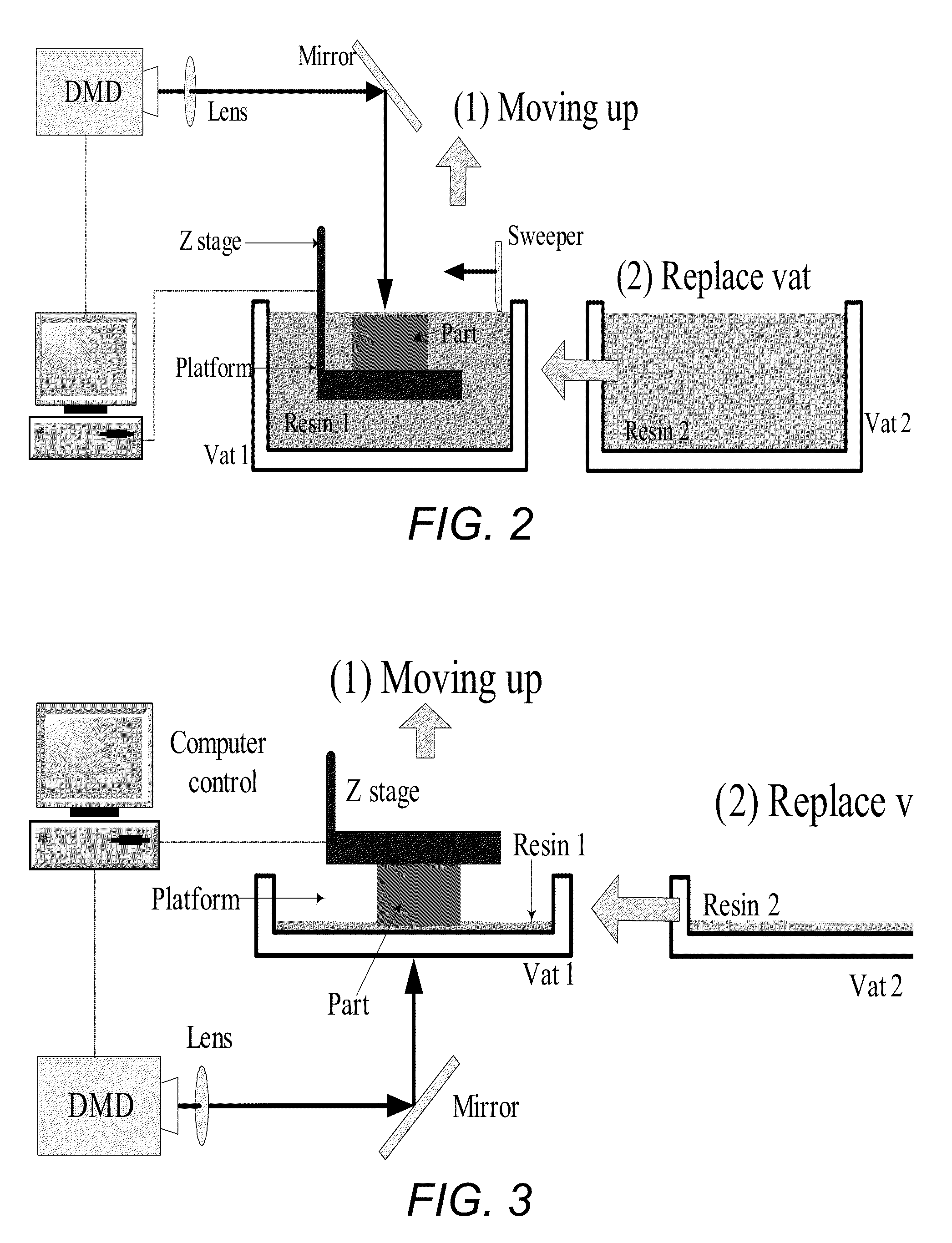Digital mask-image-projection-based additive manufacturing that applies shearing force to detach each added layer
a technology of additive manufacturing and digital mask, applied in additive manufacturing, auxillary shaping apparatus, manufacturing tools, etc., can solve the problems of inability to meet the needs of digital material fabrication, limited fdm process, and limited nozzle size and minimum nozzle size,
- Summary
- Abstract
- Description
- Claims
- Application Information
AI Technical Summary
Benefits of technology
Problems solved by technology
Method used
Image
Examples
Embodiment Construction
[0075]Illustrative embodiments are now described. Other embodiments may be used in addition or instead. Details that may be apparent or unnecessary may be omitted to save space or for a more effective presentation. Some embodiments may be practiced with additional components or steps and / or without all of the components or steps that are described.
Shearing-Based Recoating Method for the Bottom-Up Projection Based MIP-SL Process
Two-Channel Design for Effective Multi-Material Fabrication
[0076]Building functional microstructures, especially digital material fabrication, may require the development of a general MIP-SL process that can fabricate all combinations of multiple resins. A challenge that may be addressed in such a multi-material MIP-SL system may be reduction of material waste and increase in cleaning efficiency during the resin tank switching process. To address the problem, the bottom-up projection in the multi-material MIP-SL process has been investigated. An illustration o...
PUM
| Property | Measurement | Unit |
|---|---|---|
| thickness | aaaaa | aaaaa |
| thickness | aaaaa | aaaaa |
| thickness | aaaaa | aaaaa |
Abstract
Description
Claims
Application Information
 Login to View More
Login to View More - R&D Engineer
- R&D Manager
- IP Professional
- Industry Leading Data Capabilities
- Powerful AI technology
- Patent DNA Extraction
Browse by: Latest US Patents, China's latest patents, Technical Efficacy Thesaurus, Application Domain, Technology Topic, Popular Technical Reports.
© 2024 PatSnap. All rights reserved.Legal|Privacy policy|Modern Slavery Act Transparency Statement|Sitemap|About US| Contact US: help@patsnap.com










